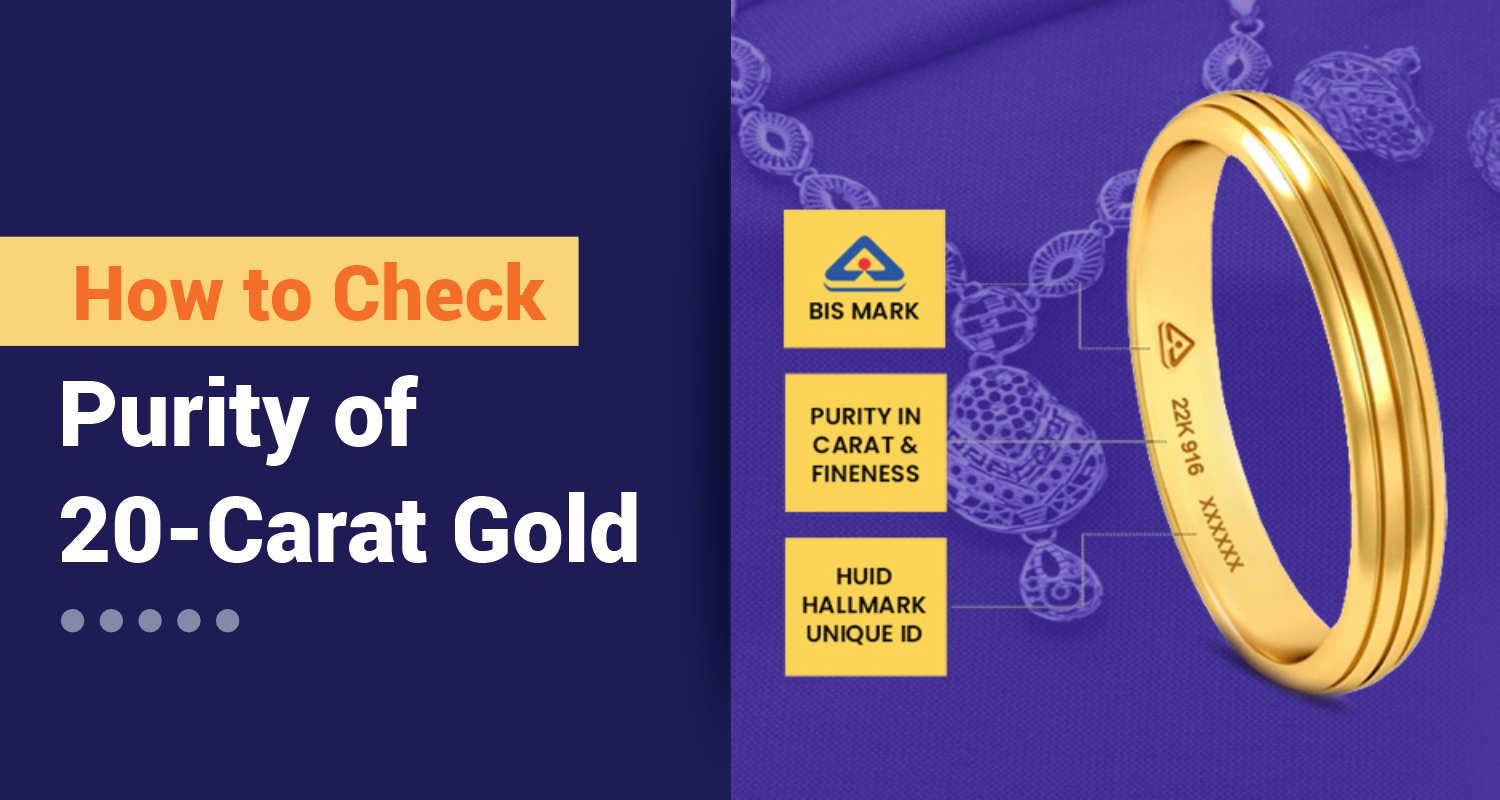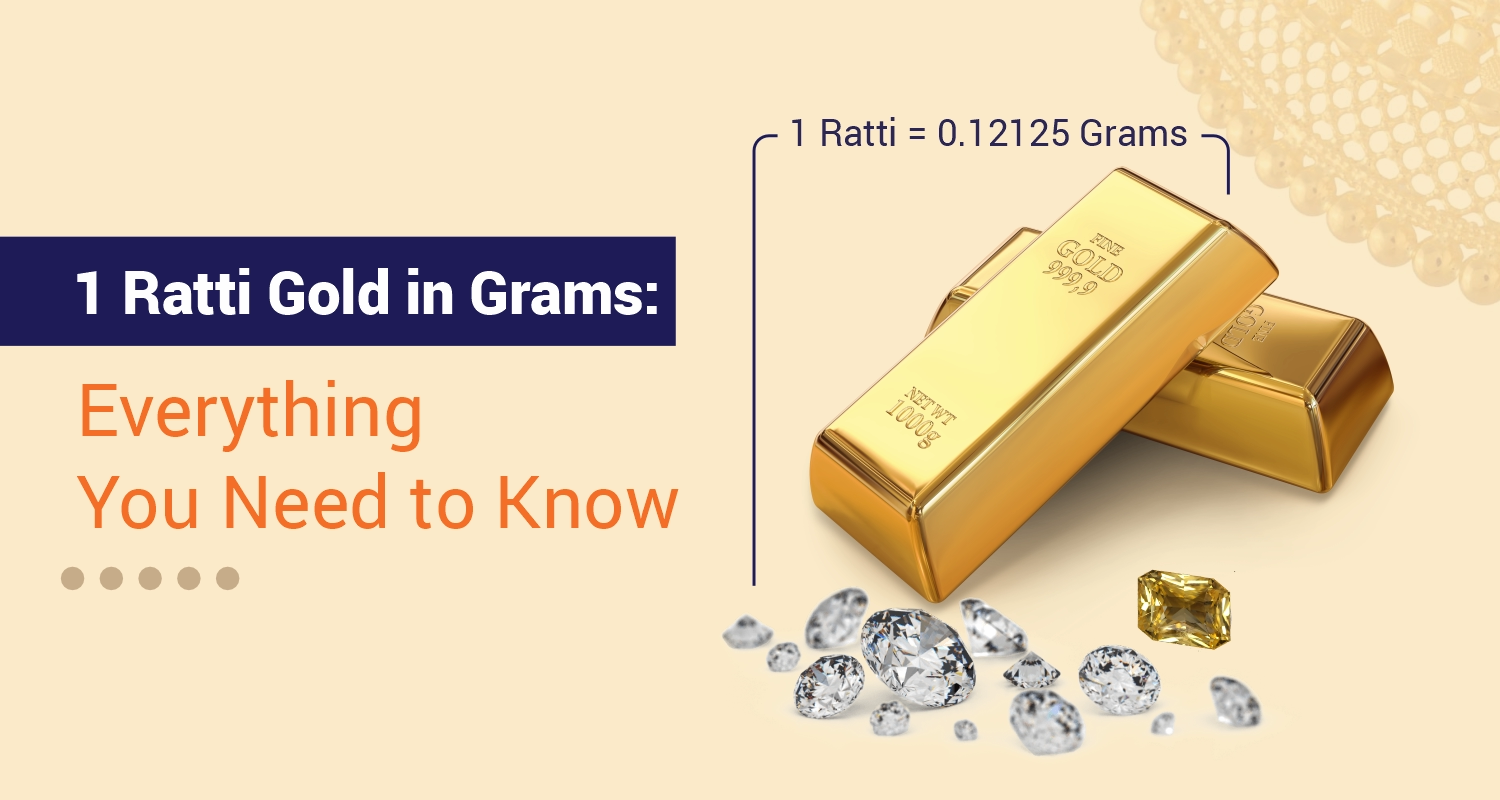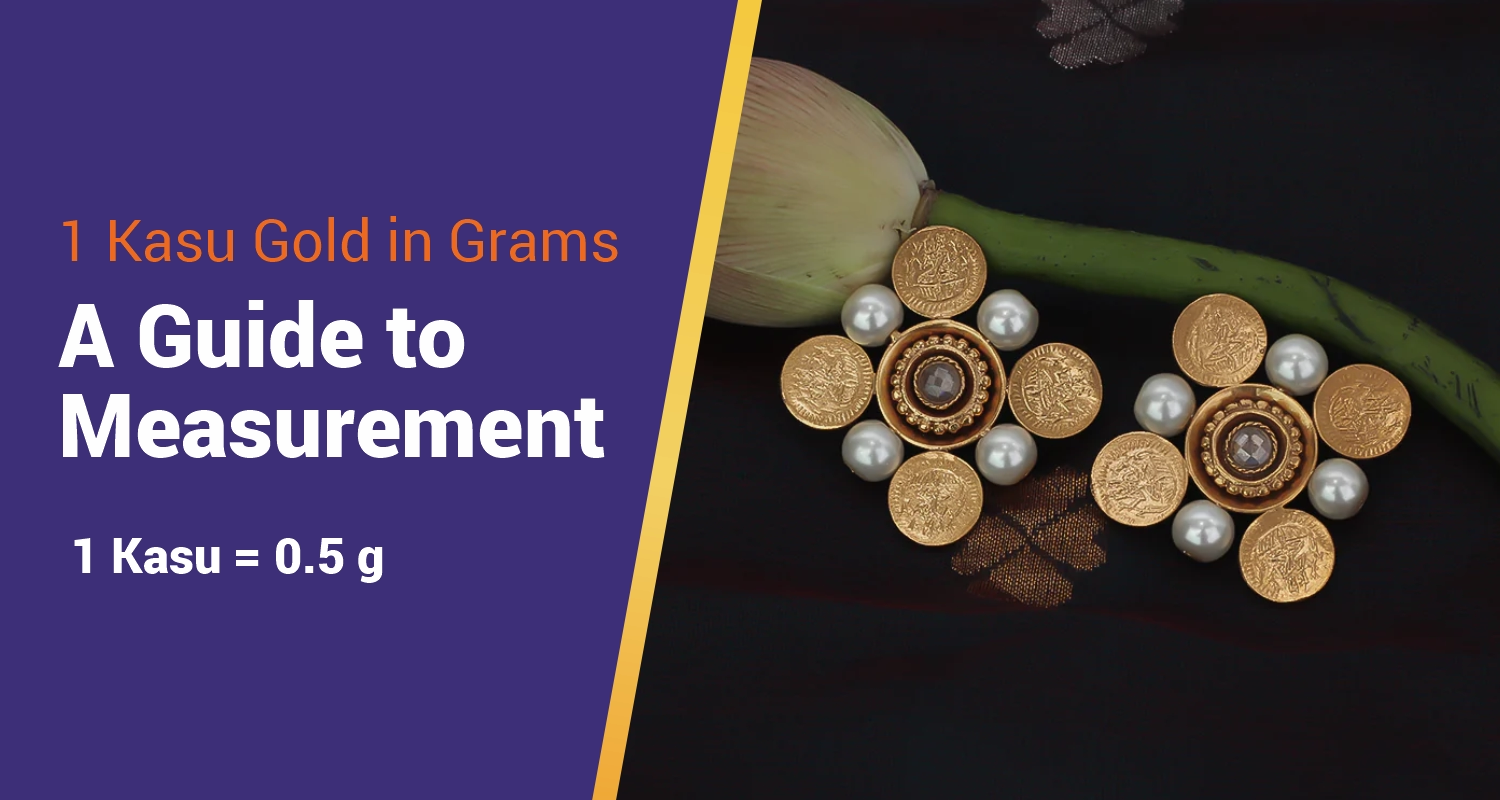How to Check the Purity of 20-Carat Gold: Easy Methods & Tips

Gold has been loved for centuries as it is seen as a symbol of wealth and everlasting beauty. Thus, it is a common desire among humans to buy gold. But before you invest your funds, you need to verify whether your jewellery is authentic or not. Now, you must understand the carat value you need to choose beforehand. 20K gold is a great balance between purity and strength in a piece; it is quite pure while still being strong enough to be worn every day. It is not as delicate as 24K gold.
Unfortunately, counterfeit gold and misleading purity levels exist in the market. Learning how to verify the purity of 20-carat gold through hallmarking, density tests, and other means will enable you to make informed purchase decisions and protect your investment from fraud.
What is 20-carat Gold?
20-carat gold refers to gold that contains 83.3% pure gold mixed with 16.7% alloy metals like copper, silver, or zinc. This combination enhances the metal’s strength while retaining its rich golden hue. The 20-carat gold purity percentage makes it ideal for crafting jewellery that balances beauty, durability, and value.
Understanding the 20 Carat Hallmark Number and Its Meaning
The 20-carat hallmark number is a certification mark that verifies the gold’s purity and authenticity. In hallmarking terms, 20K gold is stamped with the number 833, which represents its 20 carat gold purity percentage. In other words, 83.3% pure gold and 16.7% alloy metals. This hallmark ensures buyers that the gold meets quality standards set by regulatory authorities such as the BIS (Bureau of Indian Standards) in India. Recognising this number helps consumers make informed purchases, ensuring transparency and trust in the gold’s quality, durability, and genuine composition.
20 Carat Gold Percentage vs Other Karat Purities
|
Gold Type |
Purity (%) |
Common Uses |
|
24K |
99.9% |
Investment, bullion, limited jewellery use |
|
22K |
91.6% |
Traditional jewellery, coins |
|
20K |
83.3% |
High-end jewellery, heritage pieces |
|
18K |
75% |
Luxury jewellery, watches, engagement rings |
|
14K |
58.3% |
Affordable jewellery, durable accessories |
|
10K |
41.7% |
Budget-friendly jewellery, everyday wear |
Get Gold Loan at the comfort of your home
Apply NowWhat are the Common Uses of 20-Carat Gold
- Jewellery– 20-carat gold jewellery is perfect for bridal wear and designer collections as it balances purity and strength in a very proper manner. 20K gold, by contrast, retains elegance but has more strength than 24K, which is too soft to create intricate designs.
- Investment– 20K gold coins and bars act as investment alternatives in certain markets. Investors like 20k gold for is high purity and resale value.
- Custom Creations- Artisans utilise 20-carat gold for bespoke, heritage and elaborate pieces. These designs typically feature gemstones that help to make heirloom-quality special pieces.
How to Check the Purity of 20-Carat Gold?
If you want to ensure that your 20 carat gold jewellery is genuine, here are some reliable methods:
1. Hallmark Certification – The Official Way
Wondering, ‘What is BIS Hallmarking?’ It is the most reliable method to verify gold purity. It ensures that your 20 carat hallmark jewellery meets the official gold standards. Governments regulate hallmarking to prevent fraud and assure customers of gold’s purity.
Components of a BIS Hallmark
When purchasing gold, check for these details:
- BIS Logo – Confirms certification and authenticity.
- Purity Mark – ‘20K’ or ‘833’ (for 83.3% purity), indicating genuine gold content.
- Jeweller’s Identification Mark – Identifies the registered jeweller, ensuring accountability.
- Year Code – Alphabetic code denoting the year of hallmarking, helping buyers trace the certification date.
How to Verify a 20 Karat Gold Hallmark
- Use the BIS Care app to scan and verify hallmark details instantly.
- Always buy from BIS-certified jewellers to ensure authenticity and avoid fraudulent practices.
- Check for proper stamping on coins, bars, and jewellery pieces before making a purchase.
2. Nitric Acid Test – Quick DIY Test (But With Caution!)
In this test, you have to apply nitric acid to a small part of the gold. If your gold is pure it will not react at all. But if it is impure it will change colour, indicating contamination with non-gold elements.
Why You Should Avoid This at Home:
- Nitric acid is highly corrosive and can damage jewellery permanently.
- A wrong application may alter the appearance of your piece or reduce its value.
- Best done by professionals at a certified testing centre, where the gold is handled safely.
Steps to Perform the Nitric Acid Test (For Professional Use)
- Prepare Safety Gear – Wear gloves, safety goggles, and work in a well-ventilated area.
- Choose a Spot – Select a small, hidden area on the gold item to test.
- Make a Small Scratch – Use a jeweller’s file to create a tiny scratch, exposing the inner metal.
- Apply Nitric Acid – Use a dropper to place a small drop of nitric acid on the scratched area.
- Observe the Reaction –
- No reaction = Likely pure gold.
- Green or milky reaction = Presence of non-gold metals.
- Fizzing or bubbling = High impurity content.
- Neutralise and Clean – If acid is used, rinse the area with baking soda and water to neutralise it.
3. Magnet Test – A Simple Household Check
Gold is non-magnetic, so if your 20 carat gold jewellery sticks to a magnet, it is likely impure.
Limitations of This Test:
- Some gold alloys may contain non-magnetic metals, making the test inconclusive.
- Fake gold jewellery may have a non-magnetic core, leading to misleading results.
- This test works best as a preliminary check but should be followed up with professional testing.
Steps to Perform the Magnet Test
- Get a Strong Magnet – Use a high-powered magnet, like a neodymium magnet, for accurate results.
- Place the Gold Near the Magnet – Hold your 20-carat gold jewellery close to the magnet without touching it.
- Check for Attraction –
- No attraction = Likely genuine gold.
- Sticks to the magnet = Likely contains non-gold metals or is fake.
- Test Multiple Areas – Move the magnet around different parts of the jewellery to check consistency.
- Follow Up with Other Tests – Since some non-magnetic metals are used in gold alloys, confirm the results using hallmarking or density tests.
4. Float Test – Quick and Easy Water Test
Pure gold is dense and sinks in water. If your gold piece floats or moves unusually, it may be fake or gold-plated.
Why This Test Isn’t Foolproof:
- Some fake gold alloys also sink, giving a false sense of security.
- The presence of hollow sections in jewellery can affect the test’s accuracy.
- Best used alongside other verification methods like hallmarking and density tests.
Steps to Perform the Float Test
- Fill a Glass with Water – Use a transparent glass filled with room-temperature water.
- Gently Drop the Gold Item – Place your 20-carat gold jewellery into the water.
- Observe the Movement –
- Sinks immediately = Likely genuine gold.
- Floats or moves strangely = Possibly fake or gold-plated.
- Check for Suspended Movement – If the gold hovers or moves slowly, it may have hollow sections or impurities.
- Confirm with Other Tests – Since some fake alloys also sink, verify purity with hallmarking or a density test.
5. Density Test – Checking Weight and Volume
Since gold has a high density (19.3 g/cm³), you can measure its volume and weight to check purity.
Steps to Perform a Density Test:
- Weigh your gold jewellery using a digital scale to get an accurate reading.
- Fill a graduated cylinder with water and note the initial level.
- Submerge the gold and note the new water level.
- Use the formula:
Density = Weight (grams) / Water displacement (cm³)
- If the density is close to 19.3 g/cm³, your gold is likely genuine.
What are the Common Gold Scams and How to Avoid Them?
Gold scams are prevalent, and knowing the risks can save you from financial losses.
Fake Hallmarking
There are some jewellers who use fake hallmarks on gold that are not pure. This can deceive buyers and they will end up buying fake jewellery by paying a lot of money. Always verify hallmark details using the BIS Care app.
Gold-Plated Jewellery Sold as Pure Gold
Jewellery that is plated with gold looks very much real. But the fact is that they only have a thin layer of gold used over base metals like brass.
How to Spot Gold-Plated Jewellery:
- It may fade over time, exposing a different metal underneath.
- A jeweller’s scratch test can reveal the underlying material.
- Conducting a density test can help differentiate between solid gold and plated gold.
Manipulation in Weight
Some jewellers use tampered weighing scales to show a higher weight, increasing the price unfairly.
How to Avoid This Scam:
- Always weigh your jewellery on a calibrated digital scale.
- Cross-check the weight at a trusted jeweller before purchasing.
Overpriced Making Charges
Some jewellers overcharge for craftsmanship by inflating making charges. Always:
- Compare making charges across multiple jewellers before finalising a purchase.
- Do not pay what you are asked straightaway. If you are making custom designs, you must always bargain and try to bring the price down.
Conclusion
Checking the 20 carat gold purity of your jewellery is an important step to make sure you are investing your money in the right place. Always remember that BIS hallmarking is the preferred method for checking your jewellery. There are also some additional tests like the magnet, float, and density tests that can be used to check your gold.
Always buy from certified jewellers and stay alert to avoid gold scams. By being informed, you can make safe and smart investments in 20 carat gold jewellery. Ensuring authenticity will help you preserve the value and beauty of your gold for years to come.
Get Gold Loan at the comfort of your home
Apply NowFrequently Asked Questions
You can identify 20-carat gold by checking for a hallmark stamp of “833”, which indicates 83.3% purity. Authentic 20K gold jewellery also carries the BIS logo in India. You can further confirm its authenticity using a gold testing kit or by visiting a certified jeweller.
The key difference lies in purity and durability. 20K gold contains 83.3% pure gold, while 24K gold is 99.9% pure. 24K is softer and mainly used for investment, whereas 20K is stronger, making it more suitable for jewellery that balances purity with durability.
Yes, 20-carat gold is suitable for daily wear. With 83.3% purity, it offers a good mix of strength and shine. The added alloys make it more resistant to scratches and bending, making it ideal for jewellery like rings, bracelets, and chains used regularly.
The touchstone method tests gold purity by rubbing the metal on a black stone to leave a mark. Nitric acid is then applied to observe the reaction. The way the mark fades or remains helps determine the gold’s carat value and authenticity.
Yes, an electronic gold tester can accurately verify 20-carat gold purity. It measures gold content by sending an electrical current through the metal and displaying the carat value. This method is quick, non-destructive, and widely used by jewellers for reliable purity testing.
You can buy certified 20-carat gold jewellery from reputed jewellers, BIS-authorized outlets, or trusted online stores. Always check for a hallmark with the 833 stamp and the BIS logo to ensure authenticity and purity before making your purchase.
The “833” hallmark represents the 20 carat gold purity percentage, meaning the item contains 83.3% pure gold and 16.7% alloys like copper or silver. This marking assures buyers of the gold’s verified quality and compliance with official purity standards set by hallmarking authorities.
No. Gold loan interest rate vary depending on policy, borrower profile, and gold purity verification. Verified 20-carat gold often gets better rates.
Disclaimer : The information in this blog is for general purposes only and may change without notice. It does not constitute legal, tax, or financial advice. Readers should seek professional guidance and make decisions at their own discretion. IIFL Finance is not liable for any reliance on this content. Read more



